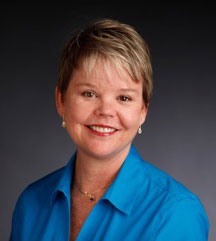Some of the most common questions readers ask about newspaper editorial boards are:
- How does the editorial board of your newspaper—of any newspaper, for that matter—determine what the paper’s position is on a particular issue?
- Who are the people who sit on the board, and how do they think?
- Do they think?
It was largely with these questions in mind that the editorial board of The Dallas Morning News launched its Weblog in July and alerted readers to its existence. Called DMN daily (DallasNews.com/opinion/blog), this blog is believed to be the only Weblog of its kind in the nation.
Reader reaction was immediate and overwhelmingly favorable. Traffic numbers topped 5,000 the first day, and we have every expectation of increasing those numbers in the weeks and months ahead. E-mails poured in raving about what fun it was for readers to essentially look behind the curtain of Oz. Editorial writers at competing publications worried about whether they’d lose out to the cutting aspect of this particular edge. A journalism professor wrote to us in praise of the teaching value of the blog to journalism students: “Students are already tuned onto blogs; your site will turn them onto the new journalism.”
Blog, for the technologically uninitiated, is short for “Weblog,” and it’s the most rapidly growing form of journalism going. Blogging generally takes the form of online journal entries written by individuals—in this case, editorial board members—with the comments often hyperlinked to the online news stories or commentary that sparked the blogger’s comment. The ensuing discussions, debates, or “roundtables” become a sort of rolling dialogue, viewable by readers at any time from any computer.
The Transparency of Decision-Making
Our purpose for launching an editorial board blog at The Dallas Morning News was two-fold. First, it’s a way to involve readers more in what we do, how we think, what actions we call for. The format opens us up to greater connections with readers, enabling us to better reflect our community. Second, it’s a way for us to demystify what we do and how we do it. We demand transparency from many organizations and businesses we cover, so it is reasonable to hold ourselves similarly accountable. Blogging also helps us to let readers know more about who we are and that we don’t live in an ivory tower and use the editorial page to formalize some high-and-mighty group-think. Nor do we meet in some dark, dank, smoke-filled chamber and await orders from on high about what to say and when to say it. Rather, we are a group of smart, responsible, diverse, well-motivated, sometimes conflicted, fallible people striving to recommend actions and policies that we think are best for our community and the world.
RELATED ARTICLE
Excerpts From the DMN Daily Weblog
– The Dallas Morning News editorial boardWe think carefully about what we say and do, often engaging in robust debate in staff meetings before arriving at an editorial point of view. This debate enlightens and informs our recommendations on the editorial page, and it stands to reason that opening a window through which readers can observe that process, and even participate in it via e-mail to individual board members if they wish, will further enhance the quality of our work.
There are thousands of blogs, many of them little more than self-absorbed meanderings of would-be diarists. But some blogs are known for their insightful, spontaneous commentary and analysis. Readers can either chime in with their own thoughts or simply draw voyeuristic delight from observing the engaging real-time conversations that materialize before their eyes. The best blogs are joys to read—quick, informative, provocative, witty and, of course, addictive.
That’s what we’re striving to provide with DMNDaily. On our blog, editorial writers have commented back and forth about political labels, what should happen next in the Middle East, whether the Bush administration was right to flash those photos of Saddam’s dead sons, whether to call for the local police chief’s resignation, and the merits of the “slow food” movement. We’ve explained to readers how we debate issues, arrive at conclusions, recommend candidates, and decide which letters to the editor and op-ed columns to publish.
There aren’t many—if any—editorial boards in the country blogging yet. It’s a delicate thing, blogging our opinions in ways we hope will help clarify and enhance—not confuse and de-grade—what we do and why we do it. The entries on the blog represent the individual views of board members, not necessarily the board’s collaborative view. But it’s those individual views that are so important to shaping the collaborative view that is published on the editorial page of the newspaper each day.
It’s a challenge because it adds a new task to the workday. That’s no small concern to journalists who have seen the demands on their time skyrocket in an era of corporate downsizing. But think about it: What could be more fundamental to an editorial board’s job than sharing our opinions, explaining their foundation, and soliciting feedback from readers? It’s our mission. Blogging isn’t so much more work, as different work. It’s a new communication platform across which we do what we do.
And it’s a platform worth pursuing. Wrote one reader just days into our big blog experiment: “I’ve been reading the blog for a few days now, and I am perplexed. Most newspapers’ (and their sites’) so-called reporting is grotesque and, frankly, unfit for human consumption. Yet you folks actually make sense. Are you certain you’re journalists?”
Keven Ann Willey has been vice-president and editorial page editor at The Dallas Morning News since November 2002. Prior to that, she was editorial page editor at The Arizona Republic and under her direction those editorial pages were finalists for the Pulitzer Prize for commentary published in 2000 and 2002.



